~ Preparing For and Getting the Most Out of a Consultation with Your Animal About a Behavior Problem ~
Living with our companion animals brings us a great deal of love and joy, but can also present challenges. The culture of every species, our natural ways of living on the earth, vary greatly. Conflicts often occur when an animal acting naturally—according to their culture (e.g. barking, digging, jumping up in greeting, sharpening little claws on furniture, urinating to mark territory, bucking when frightened)—clashes with our preferred way of living (e.g., wanting peace and quiet, a yard without gaping holes, an un-frayed sofa, unsoiled carpets, and remaining safe). Everyone’s tolerance level for certain behavioral conflicts varies, as does how we approach attempting to resolve them varies.
When we ask our animals to change a behavior, it’s important to remember that by having companion animals live in our homes (or horses living on our property or horse facility), we are expecting them to adapt to living in our culture, with the rules of our species and our way of living on earth. Considering that, do we have a right to have certain expectations for our companion animals’ behavior, and to set boundaries in our relationships with them? Of course we do. Along with that right is a parallel responsibility to make sure their needs are met, and that our expectations for their behavior are realistic ones given their species and their living situation. For an animal communication consultation to be effective in helping change behavior, it must be a collaborative effort between the human and the animal, with the animal communicator providing translation and facilitation of the process.
This purpose of this article is to help you better understand how to best utilize the specific tool of animal communication consultations as one strategy to help resolve behavior problems with the animals you love. It describes in detail the importance of examining our expectations, learning more about why our animals are behaving the way they are, what feelings and needs are related to their behavior, and discussing and mediating potential solutions and potential consequences when behavior does not change.
What we’ll cover:
What Elements are Needed in an Animal Communication Consultation to Create the Greatest Chances of Influencing Behavior Change?
1. An animal communicator who facilitates an interactive conversation
2. Clarity! Clarity! Clarity!
What’s the specific behavior concerning us and how is it impacting us?
What’s the specific behavior that we WANT?
3. Realistic Expectations
4. Listening! Listening! Listening!
All voices need to be heard, all needs deserve to be acknowledged
5. Negotiating Change
6. Creating and Committing to a Follow Up Action Plan Beyond the Consultation
What If My Animal’s Behavior Doesn’t Change After A Consultation?
Addendum: Personal Planning Guide for Before, During and After an Animal Communication Consultation for Behavior
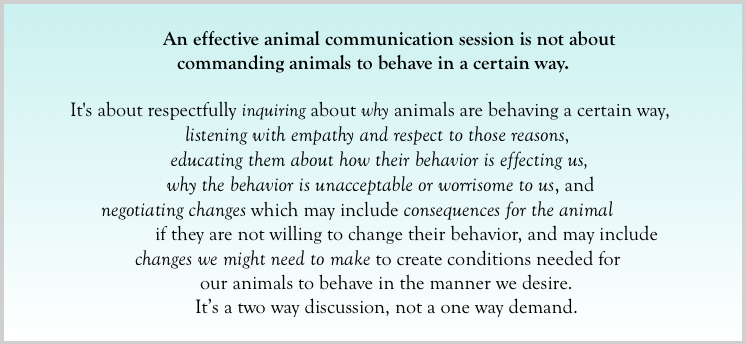
What Elements Are Needed in an Animal Communication Consultation to Create the Greatest Chances of Influencing Behavior Change?
1. An animal communicator who facilitates an interactive conversation
An effective animal communication consultant will listen thoroughly and with empathy to both the human and the animal, accurately translate the concerns of each to both parties, help to mediate potential solutions that can help meet the needs of both parties, make suggestions and offer resources when appropriate to help resolve the problem (but not impose resources or their own opinions), and facilitate discussion of needed follow-up actions beyond the consultation.
This type of interactive conversation—which insures that every voice is heard, root causes are sought, and solutions are discussed and mediated—is very different from a one way psychic reading, and much more likely to help bring about behavior change.
2. Clarity! Clarity! Clarity!
What’s the specific behavior concerning us and how is it impacting us?
What’s the specific behavior that we WANT?
Everyone’s tolerance level for certain behavioral conflicts varies, as does how we approach attempts to resolve the conflicts. However, no matter what our tolerance level of the current behavior or what our preferred strategies to resolve it may be— one thing that is absolutely critical to the process of any efforts to help our animal change behavior is to be clear.
In attempting to work out behavioral problems, it’s extremely important to carefully and thoroughly think through and become very clear about our boundaries and needs, to give careful consideration to the specifics of the behavior we’re concerned about and why. Preferably, this is done before a consultation because it not only saves time in the session, providing more time for actual conversation with the animal, but even more importantly, it actually begins the problem solving process within us.
We need to ask ourselves:
What is the specific behavior we are concerned or upset about?
When did it begin, how frequently does it happen, and what are any related circumstances or events surrounding the behavior (i.e., did anything else change in the animal’s life around the time the behavior of concern began or when it repeats)? See the Personal Planning Guide to Help You Get the Very Most From Your Animal Communication Consultation for a Behavior Issue for detailed suggestions to become very clear about these issues.

How is our animal’s behavior impacting us?
• Emotionally: i.e., worried that our cat may be killed by predators if they don’t come in before dark; angry at being woken up so early every day; feel disrespected and angry when they destroy furniture.
• Physically: i.e., hurts our shoulder and wrist when dog continues to pull hard on leash during walks; hurts when they bite me; am becoming ill from lack of sleep because my cat wakes me at 4am to eat.
• Financially: i.e., cost of cleaning and replacing carpet or furniture when animal urinates in the house.
• Socially: i.e., cannot take dog to dog park or other fun places for both of us because dog growls and lunges at other dogs.
When animals have a better understanding of how their behavior impacts us, and our human culture in which we are asking them to adapt, it can increase their motivation to make the changes we ask for.
What specifically, is the behavior we WANT?
It’s equally important to clarify in detail the behaviors we WANT, not just what we don’t want. For instance, it’s far more effective to tell our cat how much we appreciate it when they pee and poo in their box, and only in their box, rather than constantly telling them to “stop going on the floor.”
The native language of animals is telepathy, which focuses on images and feelings much more than words. Because of this, picturing the behavior we want along with sending them our feeling of appreciation is more powerful than just telling them in words to stop doing what we don’t like when we’re angry. For detailed, step-by-step instructions on how to do this, read the brief article “Picture the Behavior You Want with Positive Feelings Attached.”

Of course, it’s normal to be angry when behaviors prevent us from having our needs met! Being specific about what we want doesn’t mean we’ll never be angry or upset about what we don’t want, but if we are only angry and upset without specifying what we do want, and in detail, we won’t be helping our animal move toward change. Clarity of detail regarding what we want and under what circumstances also helps our animal understand our request. Examples:
Stop barking so much!
This is not so effective if it’s all we ever say about problem barking, because it doesn’t provide any context of why we don’t like it and what we would like them to do instead. By itself, it’s simply a complaint.
I really appreciate when you bark just once or twice when someone walks past our property. It helps me remain calm and focused on my work when you bark only once or twice instead of for several minutes.
This is much more effective because it provides appreciation, an alternative desired behavior and context in which we would like to see that behavior.
These may seem like unimportant details, but they are actually quite important. They are invaluable in informing our animals what we want and why and describing our preferred specific alternative to current behavior. This clarity, along with communicating our appreciation, is much more likely to take us toward change.
One conversation may not get a dog to immediately stop excessive barking at a door, but it will begin the process and will definitely educate the dog on what is important to you and why. In a consultation about such an issue, a communicator should make empathic inquiries with the dog about what motivates them to bark, and what would support them to consider changing this behavior.

Focusing primarily on what we want rather than only on what we don’t want, not only makes things more clear for our animal, but helps them be less defensive in the conversation. Imagine if you wanted your spouse to be kinder and more attentive to your mother when she visits and you say one of the following:
Could you please be less aloof and dismissive with my mother when she visits?!
This is not so effective. It’s overgeneralized with no explanation of what is meant by “aloof and dismissive,” allowing it to easily be interpreted as criticism without explanation, and a demand versus a request despite the word “please” being included (the exclamation point referring to the high emotion involved diminishes the usual respect implied by the word “please”).
I have a favor to ask you. I’m wondering if would consider spending a few minutes striking up a conversation with my mother when she visits. I know it can be boring listening to her stories, but she is lonely and she adores you. Chatting with her just for even 10 minutes when she visits would mean the world to her—and to me. I would so appreciate this.
This is much more effective—requests a specific behavior, framing it as requesting a favor, rather than making a complaint or making a demand, and includes empathy regarding how “boring” it may be to use the behavior requested.
Obviously, this example is not about conflicts with our animals’ behavior, but the principle is the same—focusing on the details of what we do want rather than generalizations of what we don’t want make a big difference. The first question to the husband might yield a defensive response such as, What do you mean I’m aloof and dismissive?! How?? The second question defines specifically what is wanted and why, along with appreciation, and is far more likely to illicit a cooperative response even if there is an eye rolling with the words, OK Honey, I think I can do that.
It works the same way with our animals. We need to be clear, specific, and frame our requests in ways that are the most likely to elicit collaboration.
3. Realistic expectations
In our relationships with our animals—as in our relationships with anyone—we have the right to set boundaries. In setting boundaries and expectations for behavior with our animals it’s important to consider their capabilities (for their species, size, age, temperament, etc.), their preferences, their background and what they may need from us to meet our expectations.
When we’re frustrated by our animals’ overstepping boundaries or not meeting our expectations, it’s a good time to step back and take an honest and close look at the extent to which we believe our expectations may be realistic and fair, or perhaps unrealistic and unfair, unattainable or even cruel—given their capabilities, species, background and current environment.
Examples of unrealistic expectations might include:
• A brand new puppy learning to go potty outside within a day or two
• Our cat not scratching the furniture even though we have not provided them with a scratching post
• A shy and timid animal turning into a gregarious, highly outgoing animal because we are extraverts and enjoy the company of extraverts
• Animals in a newly blended family immediately getting along and like one another without any hissing, growling or hiding
• A horse excelling in dressage after showing us again and again that they are not good at it and clearly do not enjoy it at all
• Expecting an elderly cat or dog to be thrilled with a new kitten or puppy without any hissing or growling and to immediately, or even after some time, to become close friends—all without ever asking the elderly animal if they wanted an energetic kitten or puppy companion, or without even alerting them that one was coming.
Examples of realistic expectations might include:
• Getting our cat’s cooperation to wait until 6am to wake us up instead of 4am (or whatever specific time works for us)
• Our dog learning to walk without excessive and constant pulling on the leash
• A cat learning to scratch ONLY on the scratching posts provided
• A dog learning that it’s acceptable to urinate and defecate ONLY outside; a cat learning that it’s acceptable to eliminate ONLY in their litter box
• A dog learning that it’s acceptable to chew their TOYS ONLY—not our furniture, shoes, etc.
• To not be bitten or otherwise physically harmed by any of our companion animals
• A horse learning that it’s unsafe for us and not ok to buck when we are on their back

When we’re having a tough time accepting our animal’s behavior and want them to change, it can help to ask ourselves:
• Is this truly a problem behavior, or a personality quirk that is part of my animal’s natural make up or a type of personality and energy I’ve never experienced before with an animal that perhaps I can learn to accept (i.e., they are not as affectionate as I would like; they’re a lot more active than dogs I’ve had in the past)?
• Are my expectations aligned with the natural cultural and social needs of my animal required to keep them healthy and happy (i.e., if my dog barks after 4 hours in a crate, maybe 4 hrs is too long without exercise; if my indoor cat claws at closed blinds, perhaps she needs light, sunshine and the fresh air felt through a screen)?
• Have I considered the impact of any abuse or neglect in their background on their current behavior (i.e., it’s taking them a long time to trust me and engage with me at the level I would enjoy)?
• Am I willing to provide the support my animal may need to help them behave in the way I want them to (i.e., more time with them, a mid day pet sitter or dog walker, a scratching post, working with a behaviorist, trainer or energy healer)?
4. LISTENING! LISTENING! LISTENING!
All voices need to be heard, and all needs deserve to be acknowledged
Finding a balance between our right to set boundaries about what is frustrating and worrying us and our learning more about our animals’ emotional, physical or cultural needs that might be part of the problem requires listening—by both parties. An effective animal communicator makes sure there is space in the conversation not just for the human to listen to the animal, but also for the animal to listen the feelings and concerns of their person.
In using animal communication with behavior problems—it is essential that both the needs of the person and the animal be discussed. Merely telling an animal to behave this way or not that way, or telling a person what they must do to change their animal’s behavior, is not a conversation, it’s more of a dictate. Dictating goes over with animals about as well as it does with humans—poorly. All beings want their voice heard. The only way dictates work is with fear. Instilling (or supporting) fear or making demands is not part of an ethical animal communication process.
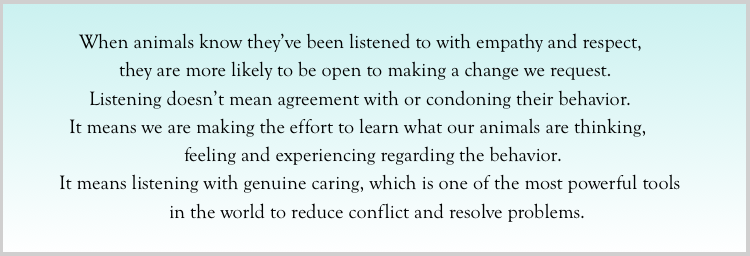
A key component of the animal communication process for behavior issues is to learn as much as possible about what’s behind the animal’s resistance to a particular behavior we want, and their motivation behind a behavior we wish they’d stop. Talking with our animals allows us to learn why they do what they do. With this information—information beyond physical observation—we are in a much better position to assess the extent to which our expectations are realistic, and to continue from there with negotiating change.
When asking our animals to change, we need to be open to the feelings, needs, ideas and requests they may reveal in the conversation, and to be willing to express empathy for their reasons for doing what they’re doing, even when we don’t condone the behavior. Just as with humans, when animals know they’ve been listened to with empathy and respect, they are more likely to be open to making a change we request. Listening doesn’t mean agreement with or condoning of the behavior. It means we are making the effort to learn what our animals are thinking and feeling regarding the behavior. It means listening with genuine caring, which is one of the most powerful tools in the world to reduce conflict and resolve problems.
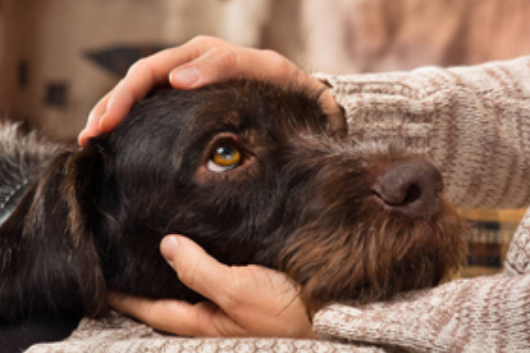
It is equally important that the animal listen to us! They must be given full information to help them understand our concerns. An effective animal communicator will be sure to describe and explain to an animal their human’s concerns, i.e., what it’s like for them to live with urine on the rugs, how it hurts them physically to be scratched or bitten, how deeply worried they are when their cat does not come in before dark, how frightening and dangerous it is when their horse bucks on a trail ride. The animal communicator’s job is to be sure that the animal factually understands the impact of their behavior on their human, and, to do everything possible to facilitate the animal also coming to a place of empathy for the hurt, anger, pain, frustration or worry their human is feeling (i.e., Fluffy, now that know that your person is becoming ill from not getting sleep because you wake her up so early, I’m wondering what you think about that? And, how we might support you in changing that behavior?).
When we know that our animals have listened to our concerns, when they indicate that they really do understand and care about how their behavior is impacting us, it makes it a lot easier for us be open to doing what may be necessary to help them make the behavior change we are requesting.
5. Negotiating Change
With expectations clarified, with expectations examined regarding the extent to which they are realistic, and with both parties having had the opportunity to express their needs and requests and listened to one another, a foundation has been prepared to negotiate. This involves not only requesting the change, but making sure that we as the humans have inquired about and understand what the animal needs to make the change.
Critical elements in the negotiation discussion include:
• Willingness on the human’s part to provide whatever is feasible to support the animal in making the requested change.
• Seeking a commitment from the animal to at least attempt to change the behavior, especially if and when their person is willing to provide discussed supports to help them do so.
• Describing any consequences to our animals if the behavior does not change. It is particularly helpful to find and choose a consequence that is highly relevant to the animal as a motivator, i.e., will only be able to run around in the small back yard with no more long walks on leash until pulling so hard on the leash stops. At times, either the client or the animal communicator may feel that it’s not time yet to discuss consequences. Perhaps the animal is emotionally fragile, and it seems best to first give them the opportunity to shift their behavior before presenting an ultimatum which may be too overwhelming. Other times, presenting consequences if the behavior does not change is extremely important, such as when a dog has already bitten a few people and they need to know that if there is another biting incident they could be permanently removed from their human and their home due to local laws.
Examples:
Cat agrees to wake person up an hour later, but really, really wants to eat immediately after his person wakes up. Person agreed to feeding her cat upon awakening. However, if the cat does not follow through with waking his person an hour later, the person made it clear that her cat will then have to sleep out of the bedroom. This potential consequence for not keeping his word was a powerful motivator for the cat because he loves sleeping with his person. It worked. The person didn’t get to take a shower upon awakening which she loved to do, because she instead fed the cat upon wakening, but she did get to sleep until she woke up naturally. The cat gave up his demand for his person to wake up and feed him at very early hours, but in turn he did get to eat before his person took her long shower and he got to continue to sleep with her.
Horse agrees to work more diligently and with more focus during training sessions. When asked if he needed anything to help him meet this request of his person, he said he really, really wants more “down time” with his person in his stall (being touched, talking together and playing around). He said he felt completely capable of the work asked of him in the training, that it was quite easy for him to do and he was willing to do it, but that he enjoyed goofing off much more. He reminded me of a human who may be very highly skilled and competent without effort in their profession, but much prefer surfing for fun. The human agreed to this request for the extra down time together after training sessions (which she enjoyed also) but with the stipulation that if her horse didn’t improve his training focus, he would likely not be involved in shows anymore. This horse loved the shows so it was a strong motivator. The horse improved a great deal in his training work and seemed ecstatic with the play time.
Dog agrees to not steal food from the counter after hearing how disrespected his person feels when he steals food meant for humans that took a lot of time to prepare. He said it may be hard to give up this habit because he SO loves food and finds it very hard to resist. The person came up with the idea to give her dog treats when she is in the kitchen preparing food—as long as he didn’t attempt to steal food from the counter. The dog LOVED this idea because he likes his treats more than human food, and as long as he got more food he was happy. So, the dog agreed to the plan, and, the human stipulated that if he does not keep his word and resumes stealing food from the counter, he will have to be crated whenever she is cooking.

NOTE: The examples above are in no way meant to suggest that the issues and consequences agreed upon are universal and would work with every animal. They are simply examples of what some clients and animals agreed upon for their specific and unique circumstances. The examples are also very brief summaries and do not include the details of what was included during lengthy conversations.
6. Creating and Committing to a Follow Up Action Plan Beyond the Consultation
Before the end of any animal communication consultation about behavior, it’s extremely important to review and check for understanding about what the animal has agreed to do, what the human has agreed to do, and then ask both the animal and the human to express their commitment to those agreements.
After the consultation:
As animal guardians we need to actively participate in problem solving with our animals not only during the consultation, but afterwards. It’s not enough to expect an animal communicator to pass on our expectations and requests and assume our animals will follow through. Follow up on our part is a powerful and necessary part of this process.
If we’ve promised to do something, we need to follow through with it. For instance:
• Keeping a promise to sit in quiet meditation for a few minutes when your cat is on your lap instead of always being on your phone when he’s there
• Spending more “down time” with your horse after training
• Getting a second litter box
• Using puppy pads until eliminating outside is firmly established
If we’ve said there will be a specific consequence if the animal does not change the behavior, we need to follow through with it. For instance:
• Crating our dog if they continue to destroy things in the house when we are away
• Not allowing our cat to sleep in our bedroom if they continue to wake us up too early
• Dog will not get off leash walks in the park if they continue to not come when called
If the animal communicator has suggested any resources that would provide energetic support for your animal to change their behavior, consider using them. These might include flower essences, energy healing such as Reiki, acupuncture, etc.
To reinforce any behavior change requested, using the “Picture The Behavior You Want With a Positive Feeling Attached” 15-second technique daily will most definitely help reinforce the change you desire.
What if My Animal’s Behavior Doesn’t Change After the Consultation?
This could happen for a number of reasons:
• Remember that animals, just like people, have free will. They may have changed their mind, forgotten their promise, or be emotionally or physically struggling to follow through with the requested behavior. Follow up communication may be needed to: learn what the obstacles to change may be, renegotiate the boundaries or the change that’s been requested and review possible consequences if the change does not occur. Please keep in mind that especially when there is a deep-seated, longstanding problem, it may take more than one animal communication consultation for change to occur.
• The underlying cause of the behavior may involve emotional issues that are still unresolved. If this was identified in the initial animal communication consultation, reconsider and follow through with all that was recommended to help your animal heal emotionally. It may involve flower essences, energy healing or other resources. Remember that the deeper and more long standing the issue, the greater the likelihood that support is needed for the animal to heal beyond one animal communication consultation, and the longer it may take for healing and related behavior change to occur.
• Perhaps our expectations were not realistic, or were not a match to the capability of our animal physically, emotionally or for their species culture.
• Perhaps we forgot to do our part, or to fulfill our promise to support them in making the behavior change. Maybe we didn’t get around to adding a second litter box, or spending more time playing with them away from our computers as we promised. Perhaps we were going to use flower essences to support them energetically to make the requested change but never got around to ordering them or using them regularly. Perhaps we were going to use the “Picture The Behavior You Want 15-Second Technique” but became quite busy and forgot. Or, maybe a crisis occurred in our lives and our follow through for this issue had to take a back seat. All of this is normal. After all, as much as we love our animals, every other relationship and role in our lives also requires our time and attention. To help our animal make the requested change, however, we do need to find the energy to do our part.
If the change hasn’t yet occurred, don’t give up!
• Continue to offer encouragement and support for them to make the requested change. Find out if new forms of support may be needed.
• When the underlying cause of the animal’s behavior problem is a deep seated emotional issue, it can take time, repeated discussions and often further resources to help the animal heal and change their behavior.
• Be willing to re- negotiate if necessary. Just like in our human relationships when we ask someone to change their behavior for us, sometimes further discussion and re-negotiation may be needed. Just like people, sometimes animals say yes to a change, but have trouble following through, change their mind or forget. Further communication to renegotiate may be needed.
• Take another look at your expectations—do they need to be modified?
• Be sure to follow through with the promises you made.
• Consider working with a professional trainer or behaviorist if you’ve not already done so. An animal communication consultant can help you clearly describe to your animal what you want, i.e., telling your dogs what it means and looks like “stay” and the safety reasons for it, or describing to your horse what you prefer they do when spooked. However, animal communication is not a substitute for in-person, professional training for dogs and horses. Experts in species specific behavior may very well be needed to help your animal make the change you desire. Think of your animal communication consultant as one person on your team—a team of trusted professionals you create for you and your animal throughout their lifetime.
Remember that when we ask another being to change their behavior for us, the change is sometimes a process that unfolds over time, rather than complete change occurring immediately after our request. Be patient, be sure to follow through with the promises you made, be willing to re-examine your expectations, be open to renegotiating and definitely try using the Picture The Behavior You Want 15-Second Technique. It is an easy-to-use, powerful, quick and free tool to help support the behavior change we want.
After trying everything described here, over what seems to be a reasonable period of time—and allowing for occasional slip ups or backsliding as part of the process—if there is still little or no progress, it may be time to accept that the behavior is unlikely to change. For the sake of your animal and your relationship, please be careful to not make that assumption until you’ve tried everything on this list (and perhaps more, beyond what is on this list).
You and your animals deserve the best possible chance of enjoying a life together with love, harmony and fulfillment. I wish this for you and all the blessings in the world.

If you will be working with me or another animal communication consultant for a session with your animal about a behavior problem, read through and use the addendum document below to help you get the very most from a consultation about behavior issues:
You may also want to browse these sections on my web site:
Consultations with Teresa
Animal Communication–how it works, when to use and more
Scheduling a private consultation

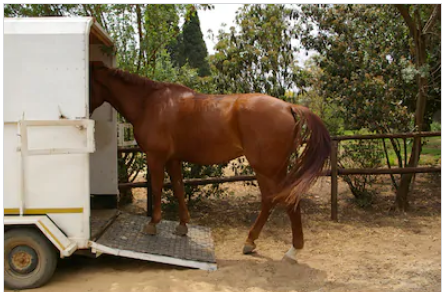
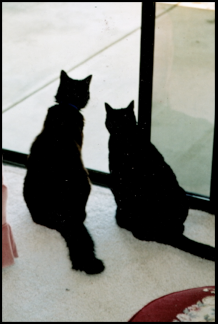

 Thank you for visiting my blog. It is a place for me to share stories from and about animals, love, loss and healing. The articles are primarily written by me, but some are from my colleagues who have graciously allowed me to share their words here.
Thank you for visiting my blog. It is a place for me to share stories from and about animals, love, loss and healing. The articles are primarily written by me, but some are from my colleagues who have graciously allowed me to share their words here. 

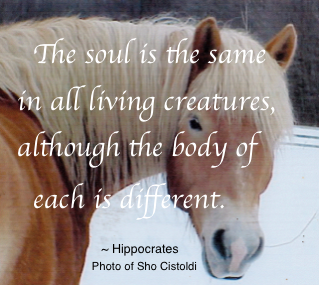

Hi Teresa,
I have been thinking of you and hope you are feeling super, you certainly have been very busy! I love this behavior information! This should be on every trainer and animal behaviorist website, you have done a unbelievable job. So informative and for free!!!
Love Diane